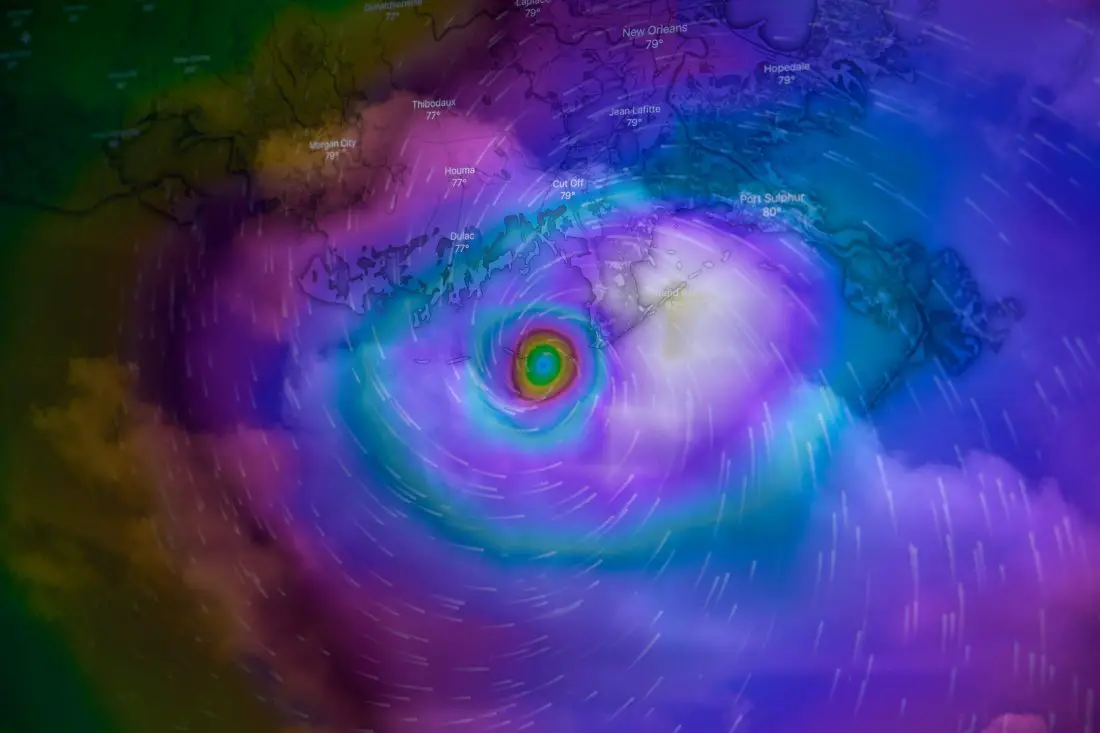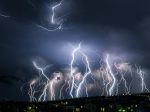Hurricane Ida’s path through Louisiana and the surrounding states flooded the media, with videos and photos showing the damage it caused thus far. Growing up in Louisiana, the lasting effects of Hurricane Katrina loomed over my childhood. It was a central topic in my education, being the focus of my 7th grade field trip to the Lower Ninth Ward, a community still rebuilding itself from Katrina’s wreckage, and the topic of discussion when I interviewed my elderly neighbor for a history project. Having learned of and witnessed the aftermath of Hurricane Katrina and experienced my share of hurricane procedures and evacuations, I find myself noticing multiple trends, as well as both similarities and differences between Katrina and Ida.
Evacuation
News of Hurricane Ida began circulating early Friday, Aug. 27, when Louisiana Governor John Bel Edwards called for a state of emergency in response to the storm. While talks of evacuation escalated, many citizens remained stubborn, mirroring the attitude that many held for Hurricane Katrina in 2005. However, more and more residents began to take the storm seriously as experts warned of its immense strength compared to Katrina. This is foreboding news to any Louisiana local, as the immense devastation of Hurricane Katrina continues to haunt the state’s residents to this day.
Additionally, the omnipresence of COVID-19 brought about a unique addition to the struggles leading up to and during the storm. For bed-ridden patients in hospitals due to the virus, evacuation was not an option. This, in turn, also meant that many of these patients’ families did not evacuate. Understandably, people are inevitably reluctant to leave behind family members, especially those fighting off a deadly virus. Health care workers without the option to abandon their jobs during the current pandemic also got trapped in the city, left to fight off two murderous entities: COVID-19 and Hurricane Ida.
For those fortunate enough to evacuate, a noticeable trend developed: People chose more unique places for evacuation. Any Louisiana native knows that the first two options when evacuating out of state are Florida and Texas. However, many chose to seek refuge in other states, such as Alabama, Virginia and Tennessee. Although it’s still unclear, this may partially be due to news coverage of last winter’s impact on Texas, whose heavy snowfall and ice caught its residents by surprise. Louisiana’s hurricane fleers likely opted to go to a more mundane and seemingly safer state. Another possible reason for this shift in evacuation locations is less elaborate: People wanted to get as far away from the storm as possible. As news of Ida’s strength spread, the public’s fear of its impact climbed, pushing evacuators as far away from the state as possible.
News Coverage and Impact
Media coverage of Hurricane Ida reached incredible heights, much more so than Hurricane Katrina. A simple Google search of “Hurricane Ida” reveals 349,000,000 results, while “Hurricane Katrina” uncovers a fraction of that number, at 58,200,000 results. This, of course, is partially due to the fact that news sources and media coverage are much more readily available and widespread than in 2005, as well as the fact that Ida is a hot topic at the time of writing.
However, a large portion of media attention toward the storm may be due to its extensive impact. The storm traveled all the way up to New York and Massachusetts by Friday, Sept. 3. Several videos of New York subways and streets flooding from the storm circulated the internet, proving the severity of Ida’s impact to be greater than storms past. Normally, during “hurricane season” (the time period between May to September that is all-too-familiar to residents of the Deep South), local coverage barely reaches national news. Thus, it effectively isolates states like Louisiana, Florida and Mississippi and reinforces the idea that hurricanes are only an issue “down there.” Now, however, with Hurricane Ida’s vast expansion across the country, the media’s attention is much more prominent.
Aftermath of the Storm
The aftermath of Ida proved to be a unique experience for many. For those who were too young to remember anything post-Katrina, witnessing the outcome of the storm is very different from hearing one’s parents or grandparents talk about it. And although New Orleans’ levee system did its job (contrary to its performance during Katrina), Louisiana and its residents are still left in unlivable conditions. Gas shortage is a deadly issue, after a scuffle over a spot in a gas station line resulted in one man being shot and killed. Additionally, supermarket shelves lay bare, and many areas have yet to receive power or water.
Consequently, Ida evacuees were warned not to return home yet, and it remains unclear when it will be safe to do so. While this news is undoubtedly disheartening and even irritating, it may likely be in the best interest of these people to stay put for now, provided they can do so.
While Hurricane Katrina’s imprint on Louisiana, its society and its residents lingers on, it proved to be especially present during Hurricane Ida. However, Ida’s impact pushes Katrina into its shadow, as the storm’s strength, coupled with the current global COVID-19 pandemic, is sure to make the history books.

















